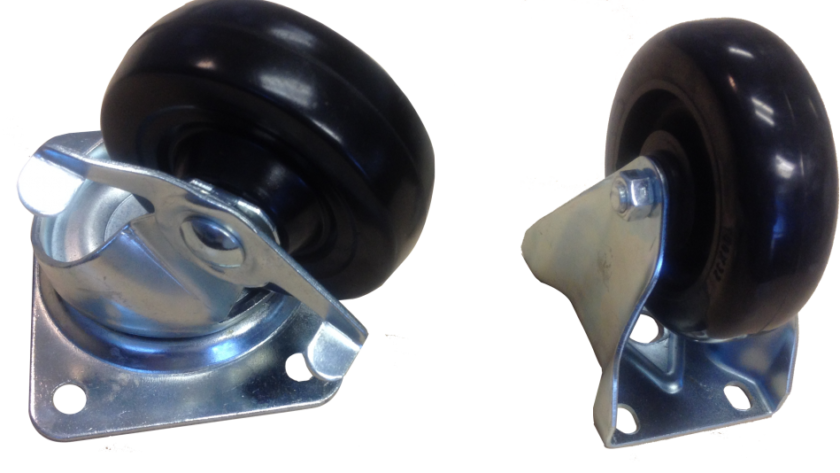A caster is a wheel and mount assembly. Casters support and facilitate the movement of carts, racks, dollies, and other equipment. Casters come in a variety of materials, wheel diameters, tread widths, load ratings, and overall heights to provide mobility for your equipment in a variety of work environments. Read on to learn more.
Contents
Abrasion resistant
Caster wheels made from polyurethane have abrasion-resistant coatings that resist cuts and tears. Furthermore, this material is resistant to most acids, solvents, and other chemicals. As a result, these casters and wheels are suitable for a wide range of applications, including heavy machinery and continuous-use operations. These wheels are quiet and long-lasting. For these reasons, they’re a popular option for long-term use.
High-capacity caster wheels are built to last. They come in high-temperature, oil-resistant, and chemical-resistant varieties. They are almost indestructible and will outlast rubber wheels. These casters are intended for heavy-duty use. Pneumatic wheels are also available and are cushioned for maximum comfort. They’re ideal for industrial applications, such as manufacturing equipment, pharmaceutical, and automotive plants. They’re also easy to clean and don’t absorb moisture, making them ideal for various applications.
They are easier to install.
Casters are easier to install and can be used on most dry factory floors. Casters are often used on materials handling equipment, industrial machinery, and furniture. Most casters come with a caliper and bracket. These brackets separate from the regular wheel, so if you need to replace the “wheel” on your cart or chair, you’ll want to replace the caster assembly, not the wheel itself. Buying caster kits instead of a single wheel is a good option because they save you money and make installation easier. It is critical that the structure in which the casters are to be mounted is rigid enough to support the load. For example, if you are mounting the casters to a previously immobile item (such as a table), keep in mind that the casters will concentrate the load over the surface area of the top plates rather than the entire surface area of the structure (i.e. wooden base). To increase the strength, it may be necessary to “build up” the corners with extra wood.
They are easier to maintain.
Commodity casters typically have open raceways and require constant greasing. Application-specific casters are designed to meet the specific requirements of a specific application. Therefore, it makes them easier to maintain and minimizes MRO expenditures. Buying the right caster for a particular application is important because purchasing teams often reorder the same parts. However, application-specific casters can be easier to maintain and will not require continuous greasing.
One of the most important maintenance of a caster is its lubrication. Caster wheels must be lubricated regularly and checked at least once a year. Casters also require regular inspections and cleaning to ensure their integrity. Proper maintenance will ensure that your casters will last for many years and will not need expensive replacement. For best results, you should inspect your casters at least monthly.
They are more expensive.
You may want to consider a heavy-duty caster for your industrial equipment. These casters offer a variety of advantages, including smooth and noiseless rolling. They are also durable, and their soft tread prevents floor damage. They are resistant to chemicals and wear. In addition, they are non-staining. Some manufacturers offer glass-filled nylon wheels, which are particularly popular for heavy-duty applications.
When purchasing wheels, consider the load capacity and safety of the employees. If the work requires human movement, consider a wheel that has a larger diameter. The proper tire design and composition can greatly affect the performance of a caster. A larger tire also makes rolling easier. Consider the cost of replacement bearings, which can quickly become expensive if a wheel breaks.




